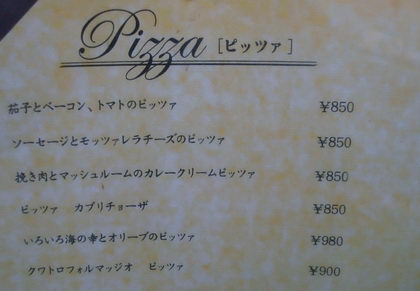Out of all the places you can visit in the world, one of the hardest for being vegetarian must be Japan. In Japan you will find it hard to find restaurants where you can get vegetarian food, and you will find your options for vegetarian food in supermarkets more limited then they will be in most other countries.

The Japanese vegetarian problem
The problem for vegetarians in Japan is caused largely by the Japanese love of fish. You will find fish, fish extracts, fish sauce (dashi), or other fish derivatives in all kinds of food. Most Japanese food will contain some fish, even if it does not look like a fish dish. Many restaurants serving foreign food will sneak fish into their food as well to make the taste more appealing to the Japanese.
A fishy tale
To illustrate how difficult it can be to avoid fish listen to this. I went to Tokyo and found a review of a vegetarian restaurant that sounded good on a vegi website. It was a restaurant serving tofu – a popular choice for vegis! On getting to the restaurant my friend and I thought we’d double check what was in the food. We asked in Japanese and it turned out that they put fish dashi (fish sauce) in ALL their tofu dishes :( That’s right, even a tofu restaurant which had been recommended by a well know vegetarian website turned out not to be vegetarian.
Ground up beef
There are other difficulties. The Japanese sometimes put ground up meat into their food. For example you may find that a tomato pasta dish which looks perfectly innocent actually contains ground up beef inside it. You won’t find it on the menu. You’ll only find out if you can talk to the waiting staff in Japanese.
Even bread isn’t safe. Some wholemeal breads in Japan contain Gelatin!
Muzukashii
Another difficulty is caused by the unwillingness of Japanese restaurants to do custom orders. In most other countries, if you ask for your food to be prepared without a certain ingredient (something you have to a lot as a vegetarian) the restaurant will agree to do it.
And why shouldn’t they. If there is a pasta with bacon on the menu it is pretty easy to prepare it without the bacon isn’t it? Well not always to the Japanese. You’ll find that if you ask for a modification to be made to a dish on the menu, they will think for a moment and then say ‘muzukashii’. This is the Japanese word for ‘difficult’. This is their way of saying they can’t do it.
I don’t understand why it is so difficult not to place one of the ingredients onto a dish which has to be prepared from scratch, but if you are in Japan you have to get used to it.
That is not to say that it can’t be done. I’ve been in many restaurants that were happy – or at least willing to make changes to items on the menu. You just have to ask them politely and then explain very carefully.
So what can you eat as a vegetarian in Japan?
Your range of vegetarian options in Japan will depend on where you are in the country, how much research you have done, and whether you can communicate in Japanese.
If you don’t speak Japanese then you will be safest eating in foreign restaurants. I found that real Indian restaurants offered the best vegetarian food throughout Japan. Note that I’m talking about foreign Indian restaurants such as Nepali Indian restaurants and not the Japanese style Curry restaurants where you are unlikely to find any options.
Indian – the world’s safest vegetarian food
India is the world’s most vegetarian friendly country and this becomes obvious when you go to a real Indian restaurant. You will usually find multiple vegetarian options in an Indian restaurant. You will also find that the staff in these restaurants that are from India will often speak English. This is a double bonus for the hungry vegetarian in Japan. If the chefs are Indian then it is unlikely that any fish sauce or flakes will be put into your food.
Italian – an often safe option
After Indian restaurants the next best option is the Italian restaurant. You will usually be able to find a margarita pizza, or a tomato pasta in the menu. Sometimes you might even find a mushroom pasta. If there is no margarita pizza then you might be able to get them to remove the meat from a bacon or ham pizza.
Something a bit more authentic
Of course if you come to Japan it is nice to try something more authentic than Indian and Italian. If you want to do this however you’ll need to speak enough Japanese to explain your dietary requirements, ask what food is suitable, discuss modifications to the items on the menu, and you’ll need to understand what your waiter is saying! Or if you have a Japanese friend bring them along.
If you handle the Japanese language then you may be able to get them to make you a vegetarian okonomiyaki (a sort of savoury pancake), or a vegetarian yakisoba (fried noodles). These dishes aren’t usually vegetarian, pretty much always containing some fish dashi and fish flakes, but some restaurants may be willing to make them vegi for you. You can ask them to leave out the fish flakes, and put soy sauce in the dish instead of fish dashi – if they have soy sauce, sometimes they don’t.
Another good option is yudame or zaru udon. These types of udon are boiled in water and will be served plain. You’ll probably get a fish dipping sauce with them, but can just leave it. You can add soy sauce, tofu, and spring onions to your udon to make them taste good.
The lunch ‘set’ menu
‘Set’ lunches are very popular in Japan. Unfortunately if you are vegetarian you won’t like them! At lunch many restaurants do these set menus which offer a very limited set of choices. If you do manage to find a restaurant that does a vegetarian option, you can bet that it won’t be there on the set lunch menu. And when it comes to set lunches the Japanese are even less willing to make modifications to the food than at dinner time.
Whereas Italian restaurants can be a good choice for dinner, they may well have nothing to offer you at lunch. The one place that might have a vegetarian option for lunch will be Indian restaurants.
Katakana and Kanji
If you want to stay vegetarian you will find it very useful to learn the Japanese katakana alphabet, and selected food kanji.
Katakana is a phonetic alphabet. Each ‘letter’ makes a sound. The good thing about katakana is that it is used for imported foreign words – usually English words. That means if you can read the katakana you may be able to understand the words without having to know any Japanese vocabulary.
If an English menu isn’t available at a foreign food restaurant such as an Italian or Indian you will probably find that much of the menu is written in katakana.
Katakana isn’t difficult to learn and you should be able to learn it in a few weeks if you put your mind to it. Below is an example menu snippet, mostly written in katakana, with a few kanji thrown in too.

Learning selected food kanji will also help you out, both with understanding menus, and knowing which food in the supermarket or convenience store is vegi safe.
The two main ‘danger’ kanji to avoid are the ones for meat 肉, fish 魚, and a bug/insect 虫.
You will find that many types of meat, fish, and seafood words in Japanese contain these kanji.
Here are some examples of non-vegetarian foods.
牛肉 – Beef. Did you spot the meat kanji?
豚肉 – Pork.
羊 – Lamb / sheep.
鶏 / とり – Chicken / bird. Here bird is written in the hiragana phonetic alphabet rather than kanji.
蝦 – Shrimp or prawn. Look very carefully at the left half of the kanji. You should be able to spot the kanji for bug / insect (虫) in there.
海老 – Shrimp or prawn. The first kanji means ‘the sea’.
Food ordering going wrong in Japan
Here are some examples of what could go wrong when you order your food in Japan. I include them so you see just how easy it if for Japanese waiting staff to get your vegetarian order wrong.
No meat please – You get given a meal with fish. Japanese people do not usually see fish as being a type of meat.
No meat or fish please – You get seafood in your dish. Such as prawns, prawn flavouring, fish sauce, fish flakes. In Japan seafood is often seen as being different to meat or fish. Even if you say no fish they might still think that fish sauce or fish flakes are fine.
No meat, fish, or seafood – You get a dish with bacon on it! Yes I have seen this happen. How could the Japanese possibly think that bacon is not a type of meat. My theory is that it is because bacon is written as バーコン which does not contain the meat kanji. Therefore some Japanese people don’t think of meat when they think of bacon.
Research your restaurants
If you don’t do research in advance you will just have to take your chance wherever you are. If you are lucky you’ll find Italian or Indian. If you are in Japan for a long time then this will get boring. Therefore you should do research into vegetarian restaurants before you go.
Find vegetarian places that sound good, and make sure you know where the restaurant is on the map. Also make sure you know the opening days and hours, as restaurants in Japan can sometime be closed at unexpected times. The one place to research your restaurants is on Happy Cow. There you’ll find vegetarian restaurants (or at least restaurants with a few vegi options) in all Japan’s big cities. Many smaller cities will have a few vegi friendly restaurants as well.
If you should happen to be going to Takamatsu on Shikoku Island, then I have a guide to Takamatsu’s vegetarian restaurants. You’ll also find a Japan survival guide on this blog.
Just want to point out that dashi is not fish sauce. It’s just soup stock. Although bonito dashi is the most commonly used dashi, it’s not the only dashi. There’s also vegetarian dashi such as kombu (dried kelp) dashi and shiitake dashi (made from shiitake mushroom).
Thank you for this information. Iam from india.Iam going to relocate to japan.Can you suggest me some vegetarian restaurants in japan?